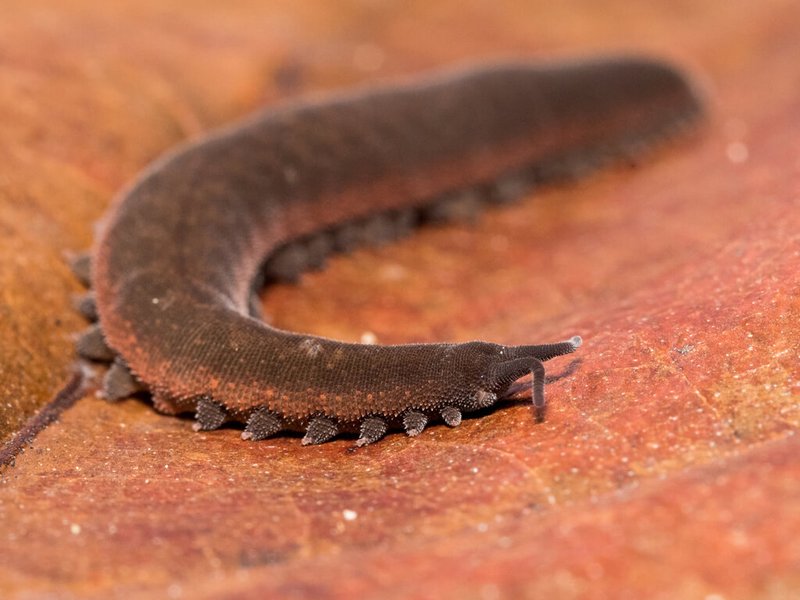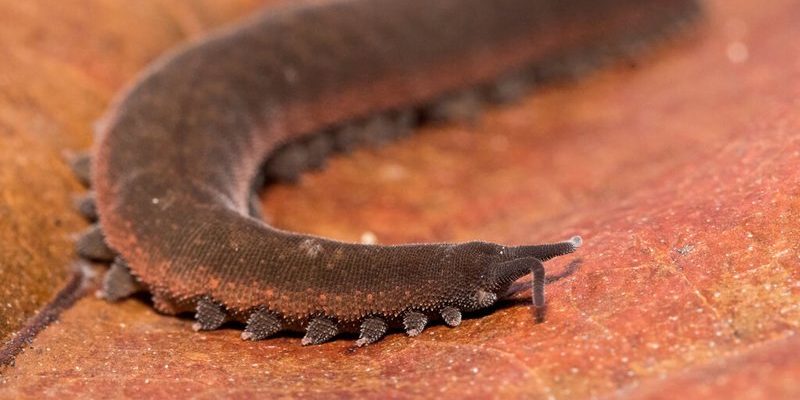
Imagine you’re trying to navigate a tricky terrain covered in leaves and twigs. To do this efficiently, you’d need to find a rhythm, maybe even synchronize your steps. Velvet worms do something similar, but they do it in a way that’s all their own. It’s like watching a well-rehearsed dance; every leg plays its role, contributing to the overall fluidity of motion. Let’s dive deeper into how these leggy marvels get around, highlighting the coordination and system that make it all possible.
The Velvet Worm: An Introduction
Velvet worms belong to a group called Onychophora, which means “claw bearer.” There are around 200 species of these soft-bodied creatures that thrive in tropical and temperate regions worldwide. They typically have a segmented body and are covered in a velvety layer that gives them their name.
These creatures can grow up to 15 centimeters (around 6 inches) long, and they have about 14 to 44 pairs of legs, which makes them stand out in the animal kingdom. Their legs are not like those of typical insects; they are more like fleshy protrusions that help them navigate their environment. Each leg plays a crucial role in their movement and functions differently, making it essential for us to understand their coordination.
How Velvet Worms Move: The Basics
So, how do velvet worms actually move? It’s all about coordination. Their movement occurs in a wave-like pattern, similar to how a caterpillar moves. Each leg lifts and lowers in sequence, creating a rhythmic motion as they propel themselves forward.
This kind of movement is surprisingly effective. Instead of relying on speed like some animals do, velvet worms benefit from careful and calculated motions. They can maneuver through leaf litter, climb up surfaces, and even navigate through tight spaces with elegance and precision. Imagine them gliding over obstacles as if they were ice skating on a smooth surface!
Leg Coordination: The Science Behind It
You might be wondering: how do these tiny creatures manage to coordinate so many legs at once? Let me explain. Velvet worms have a unique nervous system that controls their leg movements. They rely on both simple and complex neural circuits to maintain a smooth, coordinated motion.
What’s fascinating is that their legs don’t move randomly; they sync together with impressive timing. Each leg works in a specific sequence, creating a ripple effect that pushes the worm forward. This is a lot like how an orchestra plays music; each instrument has its part, but together they create harmony.
The worm’s body also plays a role in this coordination. The flexibility of their soft bodies allows them to adjust their movements as they encounter different terrains. Think about when you walk across a sandy beach versus a rocky path; your body naturally adapts to maintain your balance. Velvet worms do something similar!
Why This Movement Style Matters
Understanding how velvet worms move is crucial for several reasons. Firstly, it highlights their adaptation to specific habitats. These creatures thrive in moist environments where they can easily hide from predators while hunting their prey, like insects. Their method of movement allows them to be stealthy and effective hunters.
Secondly, studying their movement can inspire biomimicry in technology. Scientists and engineers often look to nature for innovative solutions. The coordinated movement of velvet worms might inform the design of robots that need to navigate complex environments, like search-and-rescue missions in disaster areas.
Lastly, observing their movement contributes to our broader understanding of evolution. How these creatures have developed their unique locomotion provides insights into the adaptations that have allowed them to survive over millions of years.
Observing Movement in Velvet Worms
If you ever get the chance to observe a velvet worm, pay attention to how it moves. You’ll notice its legs work together in a synchronized dance, creating a beautiful display of nature’s engineering. Researchers have used high-speed cameras to capture this motion, revealing the detailed choreography of their leg movements.
During these observations, scientists have noted that velvet worms also exhibit some fascinating behaviors, like how they navigate obstacles and interact with their environment. For example, when they encounter a steep incline, they adjust their leg movements to maintain stability, much like a hiker would when scaling a hill.
So, the next time you hear about velvet worms, imagine them gliding gracefully with their coordinated leg movements, adapting to their environment as they go.
The movement of velvet worms is one of the many wonders of nature. Their unique method of leg coordination speaks not just to their survival but also to the intricate connections found in the ecosystem. By understanding how these soft-bodied creatures navigate their world, we gain insights into the complexities of life that are all around us.
So, the next time you’re out in nature and perhaps stumble upon a velvet worm, take a moment to appreciate the elegance of its movement. It’s a reminder that even the smallest creatures have their own special way of thriving. Isn’t it amazing how much there is to learn from them?

